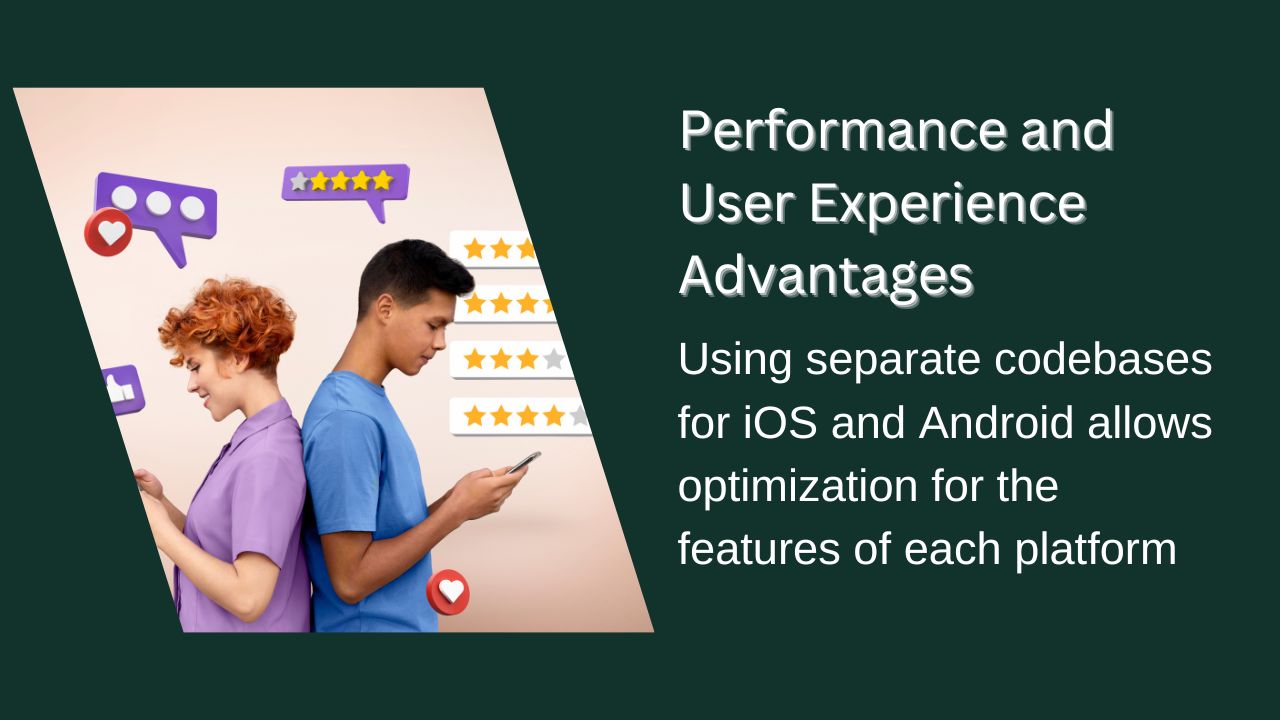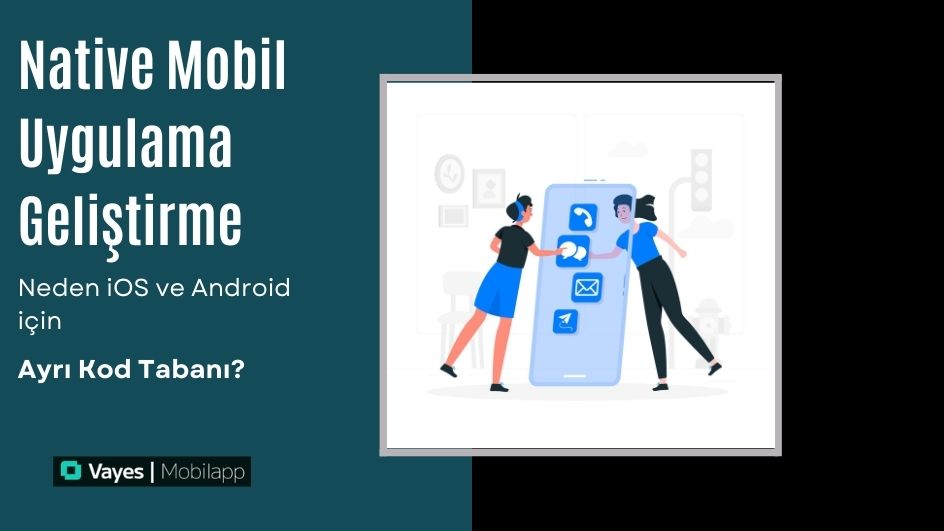Table of Contents
- What is Native Mobile App Development?
- Differences Between iOS and Android Platforms
- Performance and User Experience Benefits
- Adherence to Design and Interface Standards
- Hardware and System Integration Capabilities
- Flexibility and Control in the Development Process
- The Future of Native Development and Emerging Trends
What is Native Mobile App Development?
Native mobile app development refers to the process of building applications for a specific mobile platform using its official programming languages and tools. For example, Swift or Objective-C is used for iOS, while Kotlin or Java is used for Android. Native mobile app development requires creating applications with separate codebases for each of the iOS and Android platforms. This approach ensures that apps can fully leverage platform-specific features and deliver the best performance to users. Performance benefits and user experience are the core focus of native development. Native apps have direct access to the device’s hardware and operating system, providing a faster and smoother experience. For instance, integrating Face ID in an iOS app or interacting with device sensors in an Android app is much easier with native development. Native mobile app development allows developers to work with platform-specific tools and libraries, making apps more secure and optimized. Additionally, native apps can adapt to platform updates more quickly, ensuring compatibility and performance.
iOS and Android platforms exhibit numerous differences at a fundamental level, which makes separate codebases necessary in native mobile app development. iOS is an ecosystem developed by Apple and runs exclusively on Apple devices. In contrast, Android, developed by Google, is an open-source platform used across devices from various manufacturers. This fundamental difference directly impacts the development process. For example, iOS apps are written in Swift or Objective-C, while Android apps are typically developed using Kotlin or Java. The file systems, API access, and security models of iOS and Android also differ significantly. iOS offers a more closed ecosystem, while Android provides greater customization options. From a user experience perspective, the user bases of both platforms have distinct expectations. iOS users generally expect a fluid and minimalist experience, while Android users often seek more customization and flexibility. Performance benefits are also influenced by these differences, as native development optimizes for each platform’s hardware and software capabilities. Therefore, native mobile app development necessitates separate codebases for each platform.

Native mobile app development excels in performance benefits and user experience compared to other development approaches. Native apps have direct access to the device’s hardware resources, such as the processor, graphics unit, and memory. This allows the app to run faster and consume fewer resources. For example, a game app developed natively will exhibit superior graphics performance and response times. Using separate codebases for iOS and Android enables optimization tailored to each platform’s characteristics. An iOS app can leverage Apple’s Metal graphics framework, while an Android app can utilize the Vulkan API. In terms of user experience native apps align perfectly with the platform’s design language. For instance, iOS apps adhere to Human Interface Guidelines, while Android apps follow Material Design principles, ensuring a natural and familiar experience for users. Moreover, native apps can adapt to platform updates more swiftly, benefiting from performance benefits that result in fewer errors and crashes.
Adherence to Design and Interface Standards
Native mobile app development offers significant advantages in adhering to design and interface standards. Each of the iOS and Android platforms has its own design principles, and users are accustomed to these standards. iOS provides a minimalist and fluid interface in line with Human Interface Guidelines, while Android offers a more colorful and flexible experience through Material Design. Native development ensures full compliance with these standards, optimizing user experience. For example, the navigation bar in an iOS app functions differently than in an Android app, and users expect these differences. Native mobile app development uses separate codebases for each platform to accommodate these design variations. This compliance allows users to use the app more comfortably and reduces the learning curve. Additionally, native apps utilize the platform’s native components, making the interface appear more natural. For instance, iOS uses a native date picker, while Android employs a different native component. Combined with performance benefits this design alignment ensures a seamless user experience.
Hardware and System Integration Capabilities
Native mobile app development provides significant advantages in hardware and system integration. Native apps have direct access to the device’s hardware and operating system, enhancing performance benefits. For example, an iOS app can easily integrate features like Face ID or Apple Pay, while an Android app can achieve deeper integration with NFC or device sensors. Using separate codebases for iOS and Android allows developers to fully leverage these platform-specific features. Native development also offers better access to system notifications, file management, and background processes. For instance, a fitness app on iOS can integrate with HealthKit to directly access the user’s health data, while on Android, a similar integration can be achieved with Google Fit. User experience is enriched by such integrations, as users can utilize all the features of their device within the app. Native mobile app development with its integration capabilities offers greater control and flexibility to both developers and users.
Flexibility and Control in the Development Process
Native mobile app development offers developers greater flexibility and control throughout the process. Using separate codebases for iOS and Android allows developers to customize according to each platform’s features and requirements. For example, to enhance an app’s performance on iOS, developers can utilize Apple’s Xcode tools and Swift’s features. On Android, Android Studio and Kotlin enable optimizations for device diversity. This flexibility boosts performance benefits while providing developers with more control during debugging and testing. Native development also grants quick access to the latest platform features and updates. For instance, when Apple releases an iOS update, native developers can immediately implement it to ensure compatibility. From a user experience perspective, this control delivers a more up-to-date and optimized app to users. Native mobile app development gives developers the freedom to create the best solution for each platform, ultimately improving the app’s quality.
The Future of Native Development and Emerging Trends
Native mobile app development continues to evolve alongside technological advancements. Technologies like artificial intelligence, augmented reality, and 5G are shaping the future of native development. For example, augmented reality apps can fully leverage a device’s camera and sensors through native development. Using separate codebases for iOS and Android ensures these innovative technologies are optimally implemented on each platform. AI-powered features are also becoming more common in native apps. For instance, iOS uses Core ML, while Android employs TensorFlow Lite to run AI models directly on the device. This enhances performance benefits and enriches user experience. Additionally, 5G technology enables native apps to offer faster data transfer and real-time interactions. For example, in a healthcare app, patient data can be shared with a doctor instantly. Native mobile app development will continue to lead the mobile app industry with these trends, always aiming to deliver the best experience to users.


